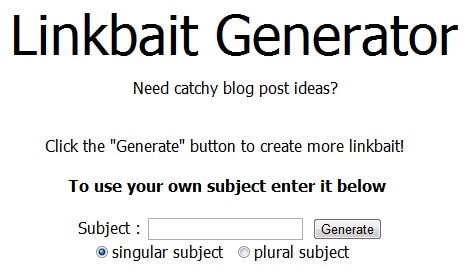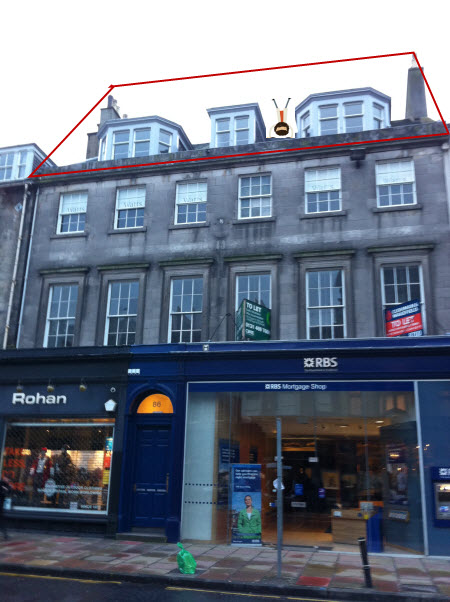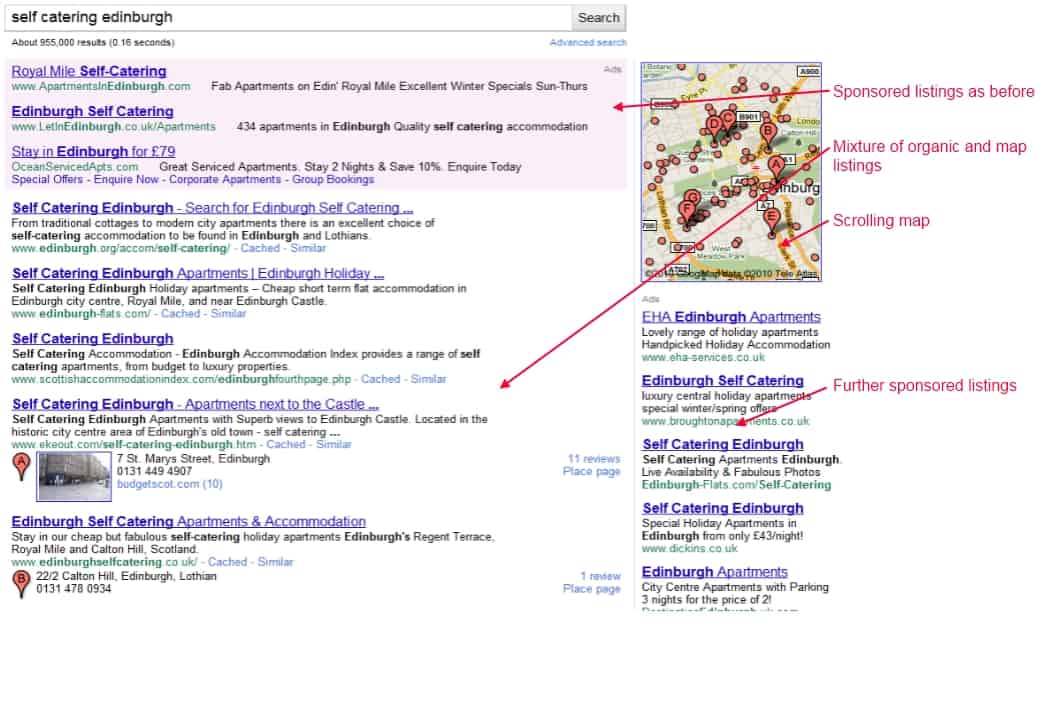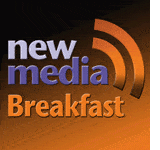Self promotion is very uncomfortable however you look at it, but equally it’s nice to bathe in a glowing feeling sometimes too, especially after a hiccup.
There’s no show without Punch
Gordon White and I have been presenting a good number of the monthly New Media Breakfasts recently. (Too many probably as it has been 3 out of the last 4, which is partly why we are inviting more guest speakers for next year).
The first of the three, “Facebook for Business” was very well received so we are repeating it in Fife this Thursday and are also using it as the base for next week’s webinar as well as taking it to Renfrewshire.
The Hiccup
Last month however, we tried something a bit different for the “Social Media – Back to Basics” breakfast and it received mixed feedback. Whilst many first timers enjoyed it, some of our more experienced regular attendees were disappointed and, however hard you try, you can’t help but dwell on the negative comments.
This was why, after presenting the “Content is King” breakfast in Glasgow, Gordon and I were so pleased to see a sea of positive comments appearing on Twitter. So much so in fact I screenshoted them to show Mrs Barlow (reproduced below). Sad but true.
Back on Track
So we definitely won’t be repeating the “Back to Basics” one (at least in the same format!) but the “Content is King” breakfast will come, in association with WinningEntrepreneurs, to Edinburgh as planned next week. Hopefully the feedback from Glasgow will convince you to come.
Thanks again to all those who tweeted and made my day!
30+ tweets
Book “Content is King” in Edinburgh >>
I’m just working with @gordonwhite on finalising our presentation for tomorrow morning’s Glasgow New Media Breakfast (repeats in Edinburgh on Thursday 15th September).
The topic is “Content is King” of which the core content is “35 versatile content ideas to power up your business’ social media”.
We are also showcasing a couple of tools . One of which, the “linkbait generator”, I will recommend with tongue in cheek.
The link bait generator is a simple tool that will generate ideas for headlines for blog posts etc. You simply put a subject into the tool e.g “new media breakfast” and it kicks out ideas.
I don’t really use it to generate headlines but every now and then it can help alleviate creative block.
Why don’t I really use it? Because it throws up ideas like the headline of this post. Still, if you’ve read this far, may be there is some real power in the Linkbait Generator. Head over and have a look.
About the Breakfasts
The New Media Breakfasts are good old fashioned offline presentations. They run monthly in Glasgow and Edinburgh and periodically elsewhere (Aberdeen, Renfrewshire and Fife currently). They frequently attract audiences in excess of 100.
Each presentation focuses on an internet marketing related topic (invariably with a close connection to social media) and are aimed at businesses and organisations wanting to increase their understanding of what online marketing can do for them – a category all Attacat clients fall into!
Recent topics have included Personal Branding, Facebook for Business (if you missed this we will be covering the same ground in our next webinar) and Converting you to Conversion Rate Optimisation.
Regular speakers at the events include Gordon White of fatBuzz (who is the main force behind the breakfasts and the host) and myself. Approximately every other presentation will be delivered by guest speakers who have included the likes of Gordon Macintyre-Kemp and Jennifer Holloway.
Diversion: Me showing off my iPhone skills by timelapsing the arrival of guests at a recent Glasgow breakfast
What’s Attacat’s connection to the breakfasts?
Over the past 18 months we have become increasingly involved in the breakfasts. My initial one-off appearance at the breakfast has evolved into regular appearances. Attacats have frequently filled the guest speaker slots (Ben, Joel and Kiril have all lead a presentation) and fatBuzz are kind enough to make us feel like we are joint venture partners in the Breakfasts, so much so that we now view it as part of the Attacat offering.
A value-add for our clients
Given this evolution we have decided that it is appropriate to cover the cost of any of our retained clients wishing to attend the breakfast. If you would like to come simply, let your account manager know instead of going through the regular booking channels.
Is this not Attacat giving away knowledge that clients would otherwise pay for?
Sure these breakfasts contain a lot of knowledge we do transfer to our clients as part of our day to day business. However knowledge is only a small part of developing a strong online presence for your business. It’s the implementation that is key for most clients.
Another major challenge that many of our clients face is getting others in their organisation to “see the light” and therefore prioritise what needs doing. The breakfasts, like our webinars, represent an opportunity for our clients to give these individuals a background knowledge.
Next Breakfasts
- Social Media: Back to Basics – Edinburgh (11th August 2011)
- Content is King – Glasgow (2nd September 2011), Edinburgh (15th September 2011)
- Facebook for Business – Fife (8th September 2011), In webinar format on 14th September 2011)
(full details on www.newmediabreakfast.co.uk)
Keep informed
Dates etc are always included in our monthly newsletter or you can add yourself to the New Media Breakfast mailing list.
A note of thanks
The New Media Breakfasts would not have been the success that they have become without the support of the partner organisations who do the promotion, organise the venues and tickets etc. They are fatBuzz (Glasgow), Winning Entrepreneurs (Edinburgh), Empire (Aberdeen) and the Renfrewshire Chamber of Commerce. Thank you.
The new media breakfast is, for one night only, becoming an evening event: The New Media BBQ on Wednesday 8th of June.
We are making a team night out of it and all heading over from Edinburgh on the 4.15 train out of Waverley. The good news is that this is officially “training” for tax purposes as the fatBuzz team have lined up a really great speaker to talk about “What Scotland can learn from Silicon Valley”. Rumour has it there may be some food and beer and it’s pretty likely we will be on the last train on the way back.
You of course would be very welcome to join us and make it an Edinburgh delegation. Book your tickets here and we will see you there (feel free to let us know you are coming in the comments below)
‘—————
Update 04/04/11 – We are in!
Update 25/03/11 – The BYOB house warming is on the 7th and open to all friends of Attacat – let us know if you are coming on Facebook or Amiando
—————
After almost doubling in size to 9 full-time staff in under 12 months something had to give, and, as our Stockbridge office was unresponsive to our wishes and prayers to grow another few feet, we had to find somewhere else to stretch out.
After 4 months of negotiations (yes really!) we finally reached agreement this morning on a pile of paperwork that would be big enough to fill our current office.
St Stephen Street has been Attacat’s base for seven years. I met my wife here 12 years ago (in a restaurant, not the office) and the street’s bars have accounted for a significant portion of my beer intake for more than 20 years. So it is with some sadness that my association with the street is coming to an end.
However things change and it is exciting to be moving on to bigger and better things. It will also be a relief to no longer have to have my desk in the kitchen as I am now!
George Street
Our new address from Friday 1st of April will be………..
3rd Floor, 86 George Street, Edinburgh, EH2 3BU. The phone number will remain the same (0131 220 1441)
Don’t worry, we haven’t suddenly gone corporate. Yes it’s an upgrade from the bunker and to us it’s pretty slick. Your average lawyer though will still be pretty underwhelmed and our prices will not be changing!
We look forward to welcoming you there in due course and standby for the house warming party.
Improving websites has always been an internet marketing essential and since the arrival of Kiril at Attacat, it’s something we have been focusing on even more. His passion and expertise in what we describe as “conversion rate optimisation” (aka “website thinknig”) has really got my grey matter stirring and changed the way I think about improving websites quite dramatically.
A Common Website Tale
For many years we have been producing detailed reports on clients’ websites. These reports highlight numerous ways of improving the usability and the general ability for the website to persuade visitors to become paying customers.
These reports have always been greeted with huge enthusiasm by the clients. Typically they get circulated to everyone with an interest in the website including all senior management and it wouldn’t be uncommon for the CEO to pick up the phone to tell us what an eye opener it has been.
However in so many cases, 12 months + on, the same unchanged website still exists. The problem lies in the fact that the reports highlight so many issues (sometimes hundreds).
Even though the reports included a short list of the most critical changes our clients would conclude that there was nothing for it but to go away and do a complete redesign of the site from the ground up (“what’s the point of making the critical changes now if we are rebuilding anyway”).
Total redesigns need to be avoided wherever possible.
The Website Mountain
Complete rebuilds feel like mountains to be climbed. Complete rebuilds get put on the “next budget year” list. Things on next budget year lists often get superseded by “higher priorities”.
Where the redesign does progress, there is a perceived need for the new website to be so perfect that the development proceeds at a snail’s pace. In the worst cases, redesigns get bogged down in extreme “scope creep” (that horrible process of every stakeholder saying “oh could you just change that”).
While all this is going on, site visitors continue to bounce off your website. The return on investment on all the work that has gone into identifying and solving issues remains at a big fat zero.
When the new site finally does launch, so much time has elapsed that it’s not uncommon for the key issues to have been forgotten and superseded by “important” requests from “important” people. The end result being that the new website ends up being little better than the old one.
Bite-sized Chunks
There is a better way. A much better way. The philosophy is similar to that espoused by “Lean Start-up” protagonists – disciplined focus on the easiest solutions to the biggest problems faced by customers, all the time with fast iterations. So rather than a major change occasionally (i.e. complete rebuilds) you should focus in on making small (but significant) changes frequently.
It’s not about identifying issues. It’s about identifying your BIGGEST issues. The ones that are having the most impact on reducing your site’s financial performance. The process of identifying the issues (which includes effective use of web analytics, low cost user testing and surveys) is scientific, yet surprisingly low cost.
It’s also not about perfect solutions. Instead the focus is on coming up with the cheapest to implement change we can make to improve this big problem. The argument being that even a small improvement on a big problem will lead to a significant overall improvement.
It does involves testing and measuring of changes. Through this approach you ensure that you quickly find out if you are going down a blind alley and can switch focus back on to the main routes. You also find out what really makes a difference so you can make more informed opinion about future changes than you would be able to do in a complete rebuild situation.
It’s also a continuous process, not a start, stop one. Once changes are made, the cycle begins again immediately to identify the next biggest problems and set of easy to implement solutions. So rather than a new website every three years, you have one that evolves continually. Can you remember the last time Amazon did a major redesign? No? That’s because (give or take!) they haven’t, they have continuously evolved instead.
Such an approach brings rapid return on investment and will inevitably take you much further forward than the “total rebuild” and it will do it for less cost and less time.
In today’s world there are so many free and low cost tools available that such a continuous evolution is a state of mind that even the small business can afford. Sure an SME probably can’t afford to be running several tests a day as Amazon probably does, but certainly there is no reason why a monthly, or worst case, quarterly cycle shouldn’t be affordable to any company that sees their website as a serious sales channel.
In the relatively short time we have adopted these practices with our clients, the returns have been impressive. One small change for example being worth £1 million a year yet identified and changed for less than £2500. Looking back it was obvious, but without the disciplined process, the obvious would likely have been missed for several years to come.
Google rolled out Instant and it was the talk of the town.
Yet last week Google made one of the most significant changes it has ever made and it has hardly created a ripple beyond the search engine optimisation community. It’s very big news for anybody wanting to rank for local search phrases (e.g. “Water Coolers Edinburgh” rather than “Water Coolers”)
The early reports put me into a flat spin until past experience told me that it rarely pays to react too quickly to a Google change. This is especially true when the reported changes simply don’t feel right from a user’s persepctive. Since then it has become clear that initial reports over-exaggerated the impact of the change but this is still an important move by Google and unlike many changes to Google, does actually require some changes to the way SEO is approached. Indeed we’ve got a new local algorithm to think about which I discuss below.
The Layout Change
For a good while Google’s map listings have been appearing in the main search engine result pages (SERPs). Before the change you would get a map in the main lisitng with a number of mini-listings for each of the places Google thought relevant. Now the map has moved and the mini listings have become even more prominent than the usual main listings.
The new layout is shown below, highlights include:
- The top 3 results continue to be sponsored listings (Google AdWords pay-per-click)
- The main results at the top of the page are now a hybrid mixture of ‘traditional’ organic results & map listings. We are seeing lot’s of variations in layout, some dominated by places listings, others much less so.
- The new map listings should experience better click rates due to the visual “pull” of the image and marker that is now included
- Reviews are much more prominent, so this is something we all need to put greater emphasis on
- The Google map is now shown on the top right hand side of the screen (this is likely to mean a reduction in the number of clicks on sponsored listings that normally occupied this space). Furthermore, the map actually scrolls with the screen, covering the PPC ads as it scrolls and making them unclickable.
- Further organic listings are shown below (and sometimes throughout) the map listings
- All further sponsored listings are shown below the map on the right hand side (we are already seeing increased competition for top 3 spots following this change)
A New Algorithm
All the place listings and the normal listings are now intermingled. This could have been achieved largely as a layout change but…
The order the places listings appear in the main results is different to the order you see if you do a search on Google Maps (which is still using the old rather flawed maps/places algorithm). This tells me that Google has added some additional means for deciding how to order map results.
One approach could have been to simply use the usual organic algorithm (i.e. simply continue to rank as before) and then simply change the organic listing to a places one if appropriate. They haven’t done this however as you can find many places results that weren’t in the main listings before. Further this approach would not have allowed Google to include companies who have no website but do have a places listing.
They must therefore have created a hybrid algorithm of sorts in addition to the “blend” type algorithm. They’ve come up with a way to compare apples and pears.
Pears (the “normal” listings) were ranked based on website content, links and other signals whilst the apples (place listings) were ranked on aspects such as reviews, citations and the quality of the content on the Google Places page. It seems that local queries are now being ranked based on a combination of these elements.
The question I continue to muse over is why display the places listings in “packs” (as noted by Andrew Shotland) – surely it would make sense to view each entity you want to list seperately. I can only assume that this is part of the solution to being able to rank entities with no websites? Packs also worry me for another reason. I suspect it may lead to sudden movement in ranks for companies as Google simply calculate that a query deserves a different “pack” arrangement.
A Quality Improvement… But Who’s in Trouble?
In most aspects, these changes are good news for the user. For companies looking to get traffic from these phrases, the news is mixed.
For a couple of years it has been relatively easy to achieve good rankings in the map listings. This has been a god-send for sites that are unfit for purpose. That party may not yet be over but it is certainly starting to thin out. Now that you need to consider traditional organic factors as well, your website and online marketing become important. That means your SEO consultant has no choice to be all over your site as well as your reviews etc.
Other losers will be those who don’t have a local presence but are looking to target local searches. If you are an agency or directory type, you do need to re-think things; there’s writing on the wall, though it isn’t immediate death as some have claimed.
If you’ve been focusing on more rounded SEO (good design, content code & online marketing) and you are a local, then chances are your quids in.
Last month, as featured here on the Brain, Attacat Joel took part in the first New Media Breakfast in Renfrewshire. Here’s an interview with Renfrewshire’s Chamber of Commerce Chief, put together as ever by the fatBuzz team.
Facebook in Renfrewshire Chamber of Commerce with fatBuzz from fatBuzz on Vimeo.
Despite the Pope’s best effort, this mornings’ New Media Breakfast was very well attended. A good 60+ risked the traffic disruption. Below are my notes taken at the event, published a couple of hours later than intended due to lack of connectivity.
This morning’s breakfast was led by Gordon White from fatBuzz. I did a quick slot on the relationship between SEO & Blogs.
Gordon kicked off with a video (below) of Seth Godin and Tom Peters.
Tom Peters:
No single thing in the last 15 years has been more important to my professional life. Blogging is the best marketing tool bar none
Why Blog?
- Single most important word: Trust – Generates brand trust, personal trust
- Humanises the organisation. Example given of Kenneth Martin at Blog Architects who has been blogging about donating his kidney to his Dad. A clever mix of personal and corporate to bring personality to the organisation. It has raised the profile of his architecture practice, striking a balance between industry commentary and personal life. Kenneth feels that the blog is the most powerful part of his social media strategy.
- Promote yourself as an industry expert – e.g. impact of legisalation, industry trends, comment on articles in traditional trade press etc. You could even interview competitors – shock horror?!
- Use as a syndication platform – You can use your blog as the hub of your social media presence that you can then use to seed your Twitter, Facebook page, LinkedIn etc. This saves time and keeps control of the content. Imagine if you’d decided to put all your content only onto Bebo a few years ago. Those doing the same now on Facebook will likely live to regret that. By having the content on your own blog, you continue to control all your content. When the next Facebook arrives, you can then simply start sending your content there rather than trying to start again from scratch.
- Adds an interactive element to your website – illustrated with a great case study: the Attacat Brain! (not at my request honestly!)
- Telling stories – blogs are great for making things interesting. The example given was the McKay whisky barrel flooring post.
- Engaging in conversation
- SEO – I did a quick cameo appearance to discuss Blogs and SEO. You can read full notes on that here.
Which Platform?
Many of the leading blogs use different platforms e.g. Huffington Post – Movable Type, Masahble – WordPress, Google Blog – Blogger. However the advice is to use a mainstream one.
The 5 most used (at least easy to identify) blog platforms:
- Blogger
- WordPress (self hosted .org and hosted at .com)
- Typepad
- Tumblr
- Posterous
Things to consider when choosing a platform:
- Customisation – note Blogger is more customisable than many believe (but not necessarily as customisable as others)
- Plugins – Plugins can add significant functionality to your site e.g. polls, sharing widgets, great SEO tools etc etc. WordPress is the clear leader on this front. Be be careful about plugins that are not supported if they are business critical (In most cases though, when one doesn’t work, someone else will write one that does, so don’t worry too much)
- Advertising – do you want to make money from advertising. Gordon recommends Google’s Blogger for this.
- Can you export your content to different platforms?
- Whether or not you can have it as part of your website or not?
- Can you have your own domain name?
Recommendation: Use backupify to back up your blog. It will back up all sorts of other things too including Google Docs and social media sites.
Some functionaility to consider adding to your blog:
- Get your own domain name
- Add sharing buttons.
- Link to your other web presences (can’t do that word)
- Twitter feeds (can get from Twitter)
- JustGiving widget if you are doing any fund raising
- Your own company widgets – e.g. if you are a property company, add your property search to the side of the blog
What Content?
Gordon gave many examples, many of which I missed – sorry.
- Nest: Just showed their new business cards – a seemingly dull topic but because the design is so good and the passion comes through, it gets the message over that they care about their brand
- It doesn’t always have to be text based. The Satorialist is a blog of great pictures of New Yorkers. Gordon mentioned a Glasgow equivalent called Les Garcons de Glasgow
- STA Travel – Gave round the world tickets to two students a year on the understanding that they blog about where they are.
- (There have been many other content ideas that have been shared at the New Media Breakfasts such as the ones on Podcasting and Facebook that can be also be applied effectively to blogging.
Some good habits:
- Be linky!
- Use Tags
- Encourage sharing
- Syndicating Content – Delvr.it is one way of syndicating content out to Facebook, Twitter, LinkedIn and others. Makes it easy and instanteous.
Promoting Posts and Encouraging Engagement
When the event was run in Glasgow, a short but very interesting talk was given by Gordon Macintyre Kemp on how he promoted his post “42.5 Tips on How to Tweet for Business” on the Drum Blog
So how did he do it. He started by writing it well!
He then promoted it by Tweeting. He then went to a competitor site, and followed 500 of thier followers. The first tweet they would’ve seen was Gordon’s blog post. They then retweet.
He then sent another tweet out saying that 70 others have retweeted it and 2000 had read it. That generated even more retweets.
Gordon likes the Topsy button because it showed who the most influential retweeters were. You can then start to build relationships with them. He’s saved them to a list on Twitter and he now RTs their posts and starts messaging them. Has another list of VEP (Very engaged people) who RT almost everything Gordon says.
The end result: Leads from 5 major brands and 5 Scottish SMEs
(Side note – Gordon’s website, like the Attacat site is entirely built on wordpress and tweaked to look like a site)
Encouraging Comments, Engement & Conversation
“First Question Syndrome – blog comments are a bit like the “Any questions?” moment at an event – for some reason nobody want to be first”
- Invite people to comment
- Reciprocate comments – comment on friend’s blogs, so they’ll do the same to you. Create a syndicate of half a dozen or so people who all comment on each others posts
- Answer comments! Make sure if people engage with you, you engage back
- Add comment to other blogs and refer to yours (but don’t over do it!)
- Link to it from Twitter, Facebook, Linked-In etc
- Mention it in video or audio podcasts
So how are you getting on?
If you been inspired to post today as a result of the breakfast (or as a result of the Glasgow event), be it about the event itself or otherwise, please tell us in the comments below and feel free to add a link! (Thanks to Nadine Pierce at Eden Scott for this great idea!).
The next breakfast will be an internet marketing question time. 24th September in Glasgow, 21st October in Edinburgh. Booking details.
![Edinburgh - 22:27 [July 07th]](https://www.attacat.co.uk/wp-content/uploads/2020/09/4844926500_e406ba2682_m.jpg)






